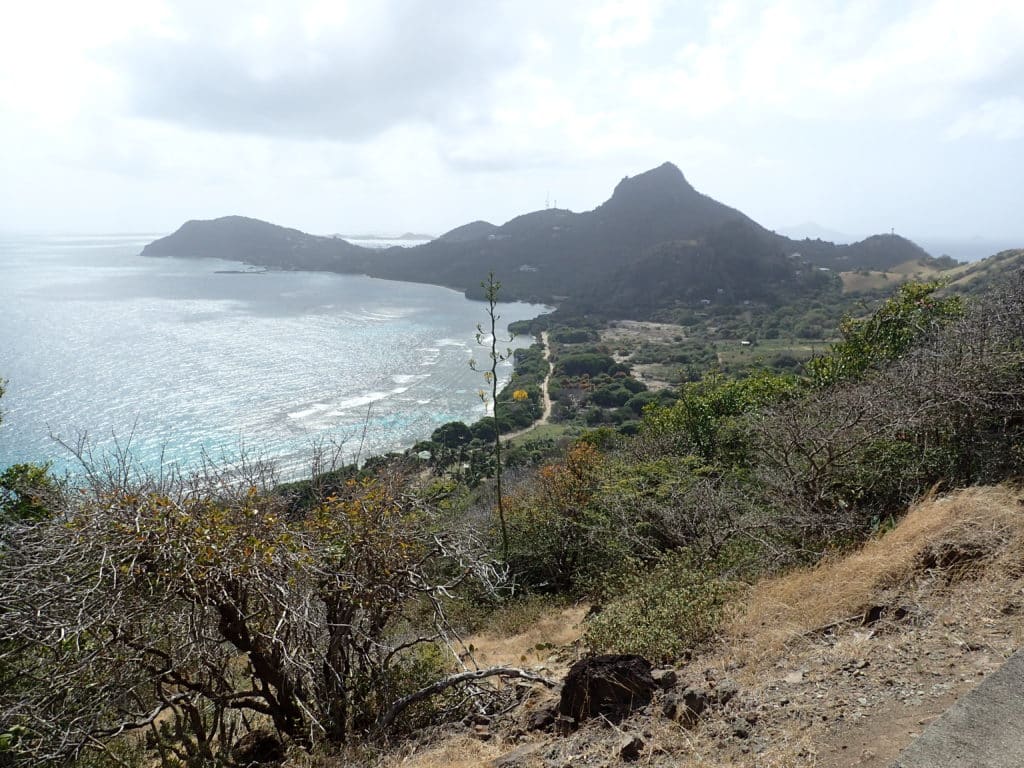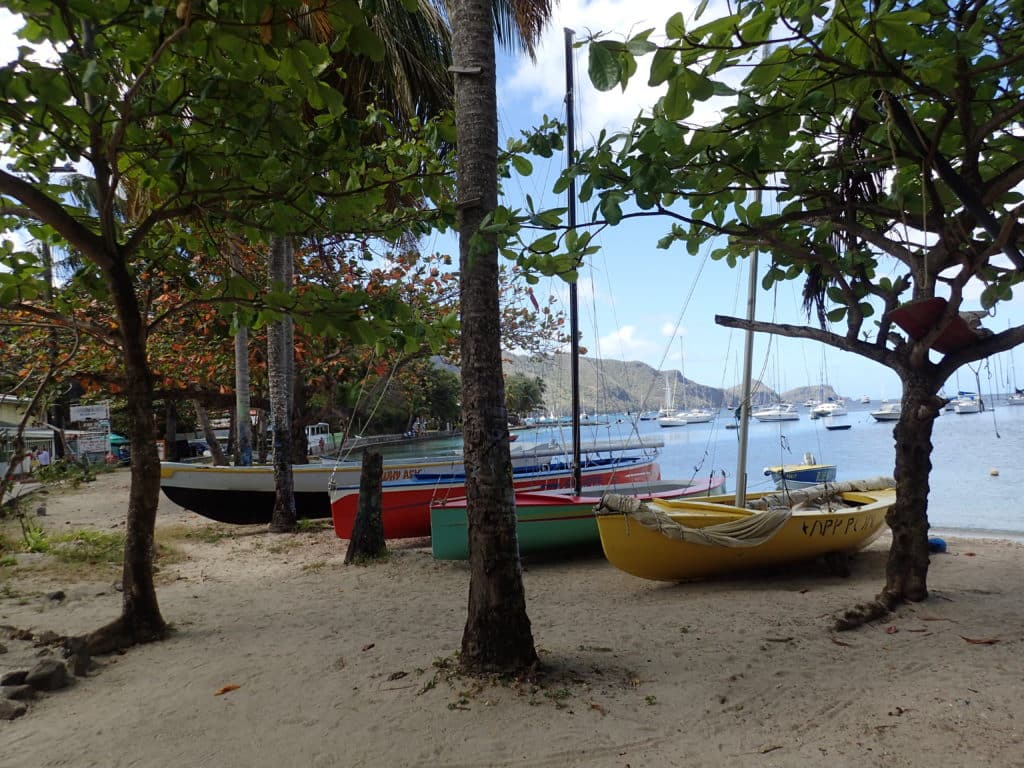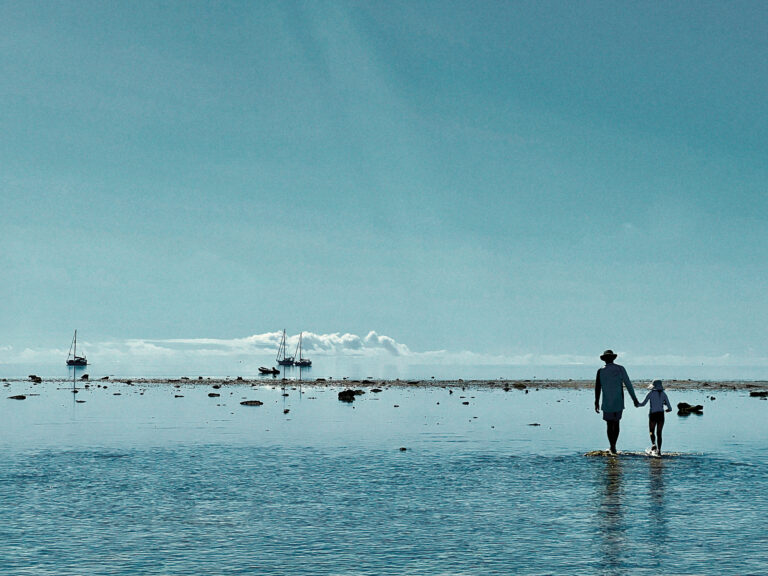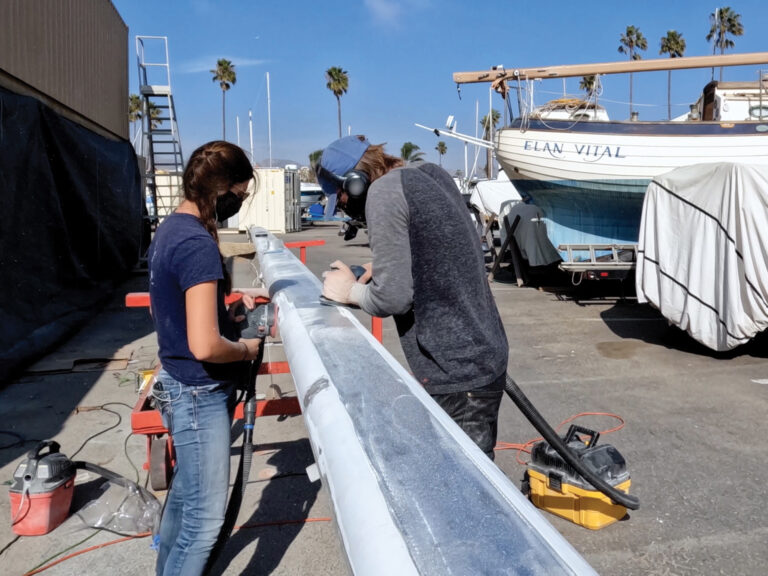
Tropical rainforests, barrier reefs, secluded anchorages: In the Windward Islands, you’ll get a taste of all that the Caribbean has to offer, and plenty of fine trade-wind sailing to boot.
For charter sailors, there are multiple choices to begin and end your adventures, and from any of them, you can choose to make your sailing vacation as laid-back or as challenging as you’d like.
The Windwards stretch north to south across roughly 120 nautical miles of the open Atlantic, from Martinique, at 14.64 degrees N, to Grenada, at 12.12 degrees N. In addition to those two bookends, the other big islands in the group include St. Lucia and St. Vincent, the capital of St. Vincent and the Grenadines. The Grenadines include bustling Bequia and Union Island, as well as several smaller, more remote islands and the otherworldly Tobago Cays.
Typically, Windward Island charter vacations begin from bases on Martinique, St. Lucia, St. Vincent or Grenada. Those wishing to relax, or fledgling skippers who want to ease into the Caribbean charter experience, can stay close to home and harbor-hop along the leeward western shore of any of the bigger islands. The more adventurous can head out and sail either north or south as far as time permits, or even opt for a one-way charter, say from St. Lucia to Grenada. The Windwards are comprised of four island nations, so you’ll need to remember to clear in and out of each along the way.
Martinique
Unlike the rest of the Windwards, Martinique has a distinctive French flair to it. The island is well developed and offers many shoreside amenities. Possible itineraries include exploring the island’s west coast or a sail south to St. Lucia.
St. Lucia
Rodney Bay, with a full-scale marina and nearby stores, is the hub for chartering on and around St. Lucia. The island offers several good anchorages, as well as a busy cruise-ship port in Castries and international air service. Typical itineraries include a sail north to Martinique or south to the Grenadines; an overnight stop at the iconic rock spires called the Pitons, on the island’s southern tip, is a must.
St. Vincent and the Grenadines
Charterers starting from St. Vincent will surely make a beeline to Bequia’s Admiralty Bay, and from there to the heart of the Grenadines: Union Island, with busy Clifton Harbour and lovely Chatham Bay; laid-back Canouan and Mayreau; and the national marine park at Tobago Cays, where visitors can pick up a mooring or anchor behind Horseshoe Reef to snorkel miles of coral and visit the park’s turtle sanctuary.
Grenada
The south coast of Grenada is scored with deep indentations, each of which makes for a spectacular anchorage. A week’s charter could easily be spent exploring these gems, or you can sail north, visiting the west coast to Carriacou, and from there continue to the southern Grenadines.

What to know if you go
Climate: Tropical temperatures are found throughout the Windwards. Temperatures in summer (the rainier season) vary from 75 degrees to 95 degrees F; winter (December to May) temperatures range from 65 degrees to 85 degrees F.
Winds: Easterly trade winds prevail across the islands. Winter winds tend to be more northerly; summer trades have a southerly component. Wind speeds vary from 10 to 25 knots, though more boisterous conditions can be expected during winter months and around the northern ends of the larger islands.
Sailing level: Skippers should be adept at reefing and comfortable with anchoring. In high season, the limited moorings get taken quickly, and many harbors lack moorings altogether. Passages between islands can range up to 30 miles and cross open ocean, so bluewater conditions can be expected.
Mark Pillsbury is CW’s editor.








